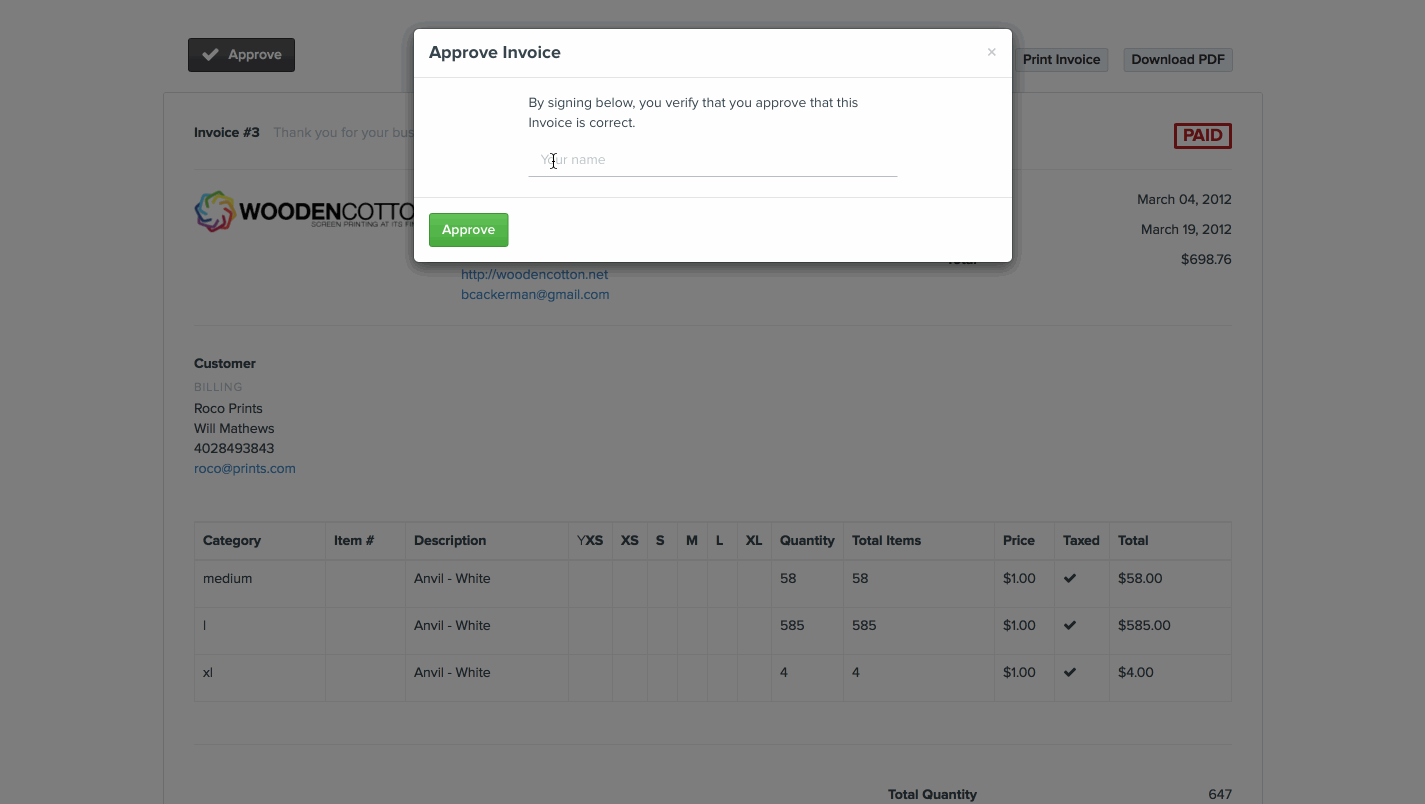
Approvals are a major source of frustration and lost profit. Administrative overhead is a real burden. Speeding up your approval process is a lucrative goal, and so is simply improving the overall customer experience.
Here are several strategies we’ve learned from working with 3,000+ print shops. Without even running back-of-the-envelope calculations, you can guess the value of speeding up your approvals process. Faster approvals mean more time for other tasks, a less frustrating experience for the shop (and customers), and a far more efficient business.
Standardize (and upgrade) your approvals
Standard operating procedures are a requirement for success, particularly in a complex process like custom printing.
You will not fix what you have not standardized. If every sales representative is making it up as they go, they aren’t just working harder than they need to — they’re missing opportunities. A simple checklist to help your team build the best approvals will have a big impact.
Standardize your approvals: standard mockup, standard process, standard follow-ups, standard everything. If you notice that you’re getting questions about a particular part of your approval process, revisit how your approval communication process works. Are you really covering all of the bases?
Whether you develop a macro in Illustrator to help you build mockups, use shop management software to send quotes, or simply send an email with an itemized list and an image — agree to standards that make sense for your team and your business.
Get 100% down upfront
For some reason, print shops occupy a niche where customers think they shouldn’t have to pay for something until they get it. This is the most powerful tool in your arsenal: get paid upfront. 100% down. Every time before you print a thing.
Maybe you think this is counter-intuitive since most shops might not consider this part of the “approval process.” But what’s more important than getting paid?
This has two delightful effects: the customer wants the approval process to be faster and the money is in your pocket. Nothing motivates people to answer that email and respond to that message like money.
There’s no other custom consumer good where it’s acceptable for the customer to pay on delivery. You don’t order a dining set and pay when they drop it off. Virtually everything that requires custom work has some wait time. You’re no exception just because you print shirts or embroider hats.
Limit back-and-forth via written policy
Do you have a written policy for what happens when a customer doesn’t approve a quote or invoice? Do you have a cap on the number of revisions a customer can make to an order? Do you have a clear written policy that outlines all of this — that is part of the approval process?
The bare minimum is some kind of clear internal policy. Perhaps after two changes, you charge for revisions. Keeping your policy visible — whether that’s through an infographic, email, or sign in your shop — is a sure-fire way to keep your approval process humming.
Art approval vs. quote approval
Sticking points differ depending on the customer. Some might be concerned with design and artwork. Others want to haggle over price.
Don’t send customers concerned with artwork through the same process as customers who are haggling over price. Instead, have boilerplate emails you send to both categories of customers.
For example, you might send a customer that’s concerned about art an email that details:
- How many revisions you’ll do for free
- The exact nature of the changes
- The timeline for revisions
That email won’t make sense for a customer concerned with prices. Instead, you’ll want to engage with them differently. Whether that’s your expertise in a specific niche (i.e., reflective vests) or some other accommodation you make for customers, you should clearly outline the extent of the value you’re adding.
Automate follow-ups
The worst thing you can do is lose opportunities because customers forget to approve art, quotes, or invoices.
We suggest using a quote pipeline so you can easily observe where quotes are “stuck.” We’ve found that approvals account for a huge proportion of stuck orders — customers are busy and simply forget.
Automated follow-ups (whether via text or email) are a huge boost to your approval process. If you haven’t heard from a customer in 24 hours, send them a follow-up thanking them for their interest and asking them to move forward. This simple step, all by itself, can dramatically reduce lost quotes.
Approvals aren’t magic; they’re a process
If you’re really struggling with approvals, audit your shop. Go through your own ordering process like you’re a customer and make an honest assessment of how your approval process works.
Mapping out your process and understanding where it fails is often all that’s required to see exactly where you can improve. But if you’re not getting paid upfront, adhering to written standards, and automating your follow-ups, then there’s work to do!



